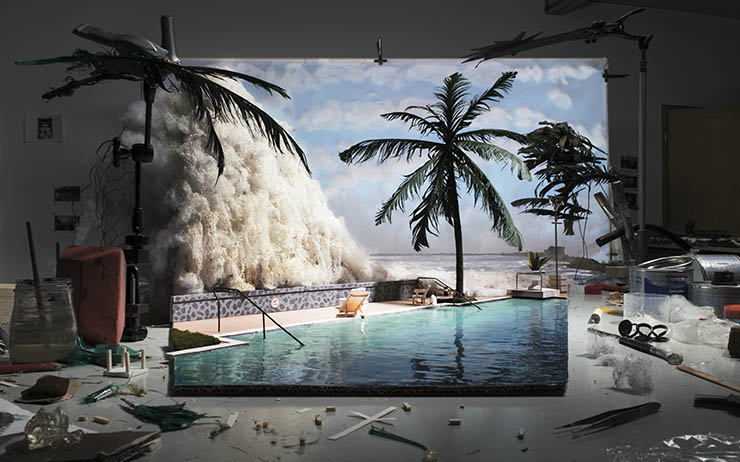
24-26 October, 2019 - Château de Dorigny - Lausanne

24-26 October, 2019 - Château de Dorigny - Lausanne
Economics, like most other disciplines, is partly cast in figurate language. Terms, concepts, methods, laws, models, and the very understanding of the discipline, often borrow to a greater or lesser extend from other disciplines or from common knowledge. This applies, although with different modalities, to both literary explorations of the subject and to the apparently dry and technical treatment of mathematical economics. Metaphors, analogies, similes and other tropes (henceforth ‘metaphors’, for short) are used with various purposes beyond a purely ornamental function: for instance pedagogical (they convey meaning by explaining something new by means of something with which the reader is more familiar), rhetoric (by persuading the reader by reference to a better established science), heuristic (by understanding an object by means of a comparison with another, or the transference of a selected set of properties from an object to another), analytical (by modelling an object in terms of another), or epistemological (by transferring to one process the kind of laws or reasonings governing another one).
There is nothing new or much contentious in this statement: a vast literature on the usage (and misuse) of analogies and metaphors in both economics and the ‘hard sciences’ has argued the case at length. There is, however, plenty of room for specific inquiries on the role individual metaphors concretely play in the construction and transmission of certain economic theories and reasonings, both as case studies of a general metaphorical approach or as whether and how the specific usage of metaphors can bring to light unstated premises and perspectives in economic arguments that would otherwise remain implicit. The latter is the purpose of a research project carried out by the Centre Walras-Pareto of the University of Lausanne, which targets a specific episode in the history of economics: the theories of equilibrium and of crises around 1870, with the purpose to throw new light on the alleged antinomy between equilibrium and crises/cycles theories.
We would like to extend the examination of such issues in a broader temporal context by convening a conference to be held in Lausanne on 24–26 October 2019 on the usage of metaphors and other tropes in the theorizing of crises, cycles and equilibrium in the history of economic thought (no temporal restriction). The conference will focus on specific aspects relating to this topic, in particular (but not exclusively):
The emphasis will be not so much on generic metaphorical references but on the specific features and relationship transferred from other domains to crises and/or equilibrium.
In order to guarantee an informed discussion, the papers will be distributed in advance to each participant (deadline for delivery of the first draft: 7 October 2019). Accordingly, presentation will be short (about 10 minutes) and will be followed by a plenary discussion
To contact organizers please write to marius.kuster@unil.ch
All papers will be presented at the Chateau de Dorigny
Book of abstracts (256 Ko)
See all articles: https://drive.switch.ch/index.php/s/Dfl6US1KdgqcH5o
Deadline for registration: 7 October 2019
To access the Château de Dorigny on the University of Lausanne campus, you have to reach the metro station "UNIL-Chamberonne" on the line m1. As there are two lines in Lausanne, if you are on the m2, you can change for m1 at "Lausanne-Flon". From UNIL-Chamberonne, there is a 5 minutes walk to the Château de Dorigny. Hopefully, you will find us quickly, as this is a small Château, and there is only one reception room on the ground floor. Don't forget that your hotel can give you a free transportation pass for the duration of your stay, and that it is valid up to go up to the university.
CWP - Centre Walras Pareto d'études interdisciplinaires de la pensée économique et politique
Quartier UNIL-Mouline
Bâtiment Géopolis
CH-1015 Lausanne
email: marius.kuster@unil.ch
Making of „Tsunami“ (by unknown tourist, 2004), 2015
For their long-term project “Icons”, Jojakim Cortis and Adrian Sonderegger recreate iconic images in their studio. Instead of using Photoshop, the duo draws on craftsmanship, various materials, and optical tricks to create three-dimensional models that mimic the original icons. The reproduced image seems identical to the original at first sight. Only by zooming out and widening the angle the “re-construction” of the image is exposed: the studio enters the field of vision, the artists’ working methods and the left-over material (wool, paint, glue) of the construction are revealed. The artists present an image within an image and animate to think about the relationship between authenticity and construction.
Their recent works are published in “Double take”: https://www.lars-mueller-publishers.com/double-take